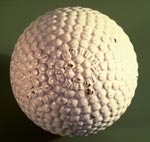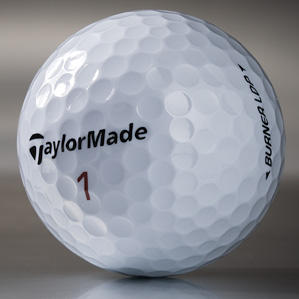History of the golf ball

During the early days of golf, the golf ball was a leather pouch that was stuffed with goose feathers. This type only flew roughly around 150 to 175 yards. In 1848, a
new type of golf ball was introduced and it was a much cheaper ball that was made from a natural gum called gutta-percha. The gutta-percha balls did not fly as far as
the "feathery" balls and it would on occasion break into pieces. As time went on, it was found that as the surface became more rough, the ball flew farther. Golfers
began to "rough" up their gutta-percha balls and soon thereafter the manufacturers began to incorporate the roughness of the golf ball in their processes. In 1890, a
bramble pattern was introduced and in 1908, an English engineer named William Taylor took out a patent on an 'inverted bramble.' Over the years, new patterns were
introduced to the golf ball but essentially they all carried the same character as Taylor first introduced his design. Then, with experiments and having a better
understanding of the physics behind the aerodynamics of the golf ball, scientists have now produced a golf ball that we are now familiar with.



"Feathery" golf ball Gutta-percha golf ball Modern-day golf ball
(Image taken from (Image taken from (Image taken from
http://featherygolfball.com) http://www.scran.ac.uk) www.golf.com)